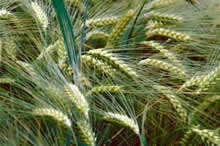Land is an indispensable resource for the most essential human activities: it provides the basis for agriculture and forest production, water catchment, recreation, and settlement. The range of uses that can be made of land for human needs is limited by environmental factors including climate, topography and soil characteristics, and is to a large extent determined by demographic, socioeconomic, cultural, and political factors, such as population density, land tenure, markets, institutions, and agricultural policies.
The Food and Agriculture Organization of the United Nations (FAO) with the collaboration of IIASA, has developed a system that enables rational land-use planning on the basis of an inventory of land resources and evaluation of biophysical limitations and production potentials of land. This is referred to as the Agro-ecological Zones (AEZ) methodology.
The AEZ methodology follows an environmental approach; it provides a standardized framework for the characterization of climate, soil and terrain conditions relevant to agricultural production. Crop modeling and environmental matching procedures are used to identify crop-specific limitations of prevailing climate, soil and terrain resources, under assumed levels of inputs and management conditions. This part of the methodology provides maximum potential and agronomically attainable yields at a global level at 5 minute resolution grid-cells.
Recent availability of vastly improved digital global databases of climatic parameters, topography, soil and terrain, vegetation, and population distribution has called for a third revision following previous revisions of resp. 2002 and 2000. This third revision (GAEZ 2009) provides analysis for a range of climatic conditions, including reference climate, individual historical years from 1901 onwards, and scenarios of future climate based on the published outputs of various global climate models. Hence, results consistently quantify impacts on land productivity of historical climate variability as well as of potential future climate change.
Examples of applications are: (i) quantification of land productivity; (ii) estimation of extents of land with quantified rain-fed or irrigated cultivation potential for respectively food, feed, fiber and bio-energy production; (iii) occurrences of environmental constraints to agricultural production, and (iv) identification of potential ‘hot spots’ of agricultural conversion and the possible geographical shifts of agricultural land potentials as result of changing climate.
Link to GAEZ 2000
Link to GAEZ 2002 (pdf) CD-ROM (Internet Exporer only!)
Link to Climate Change and Agricultural Vulnerability (pdf)
Responsible for this page:
Elisabeth Kawczynski
Last updated:
24 Feb 2011
![]()


 Schlossplatz 1
Schlossplatz 1